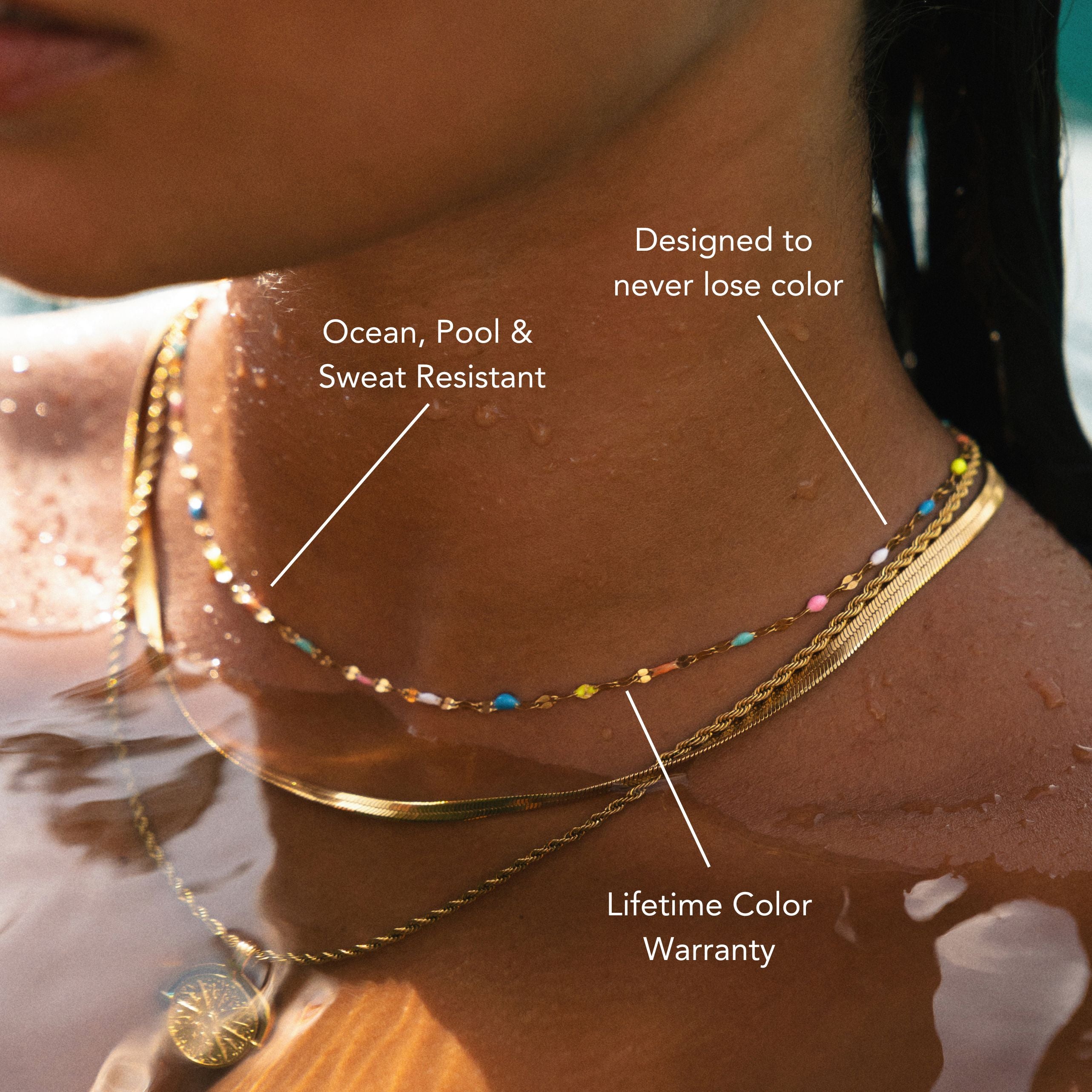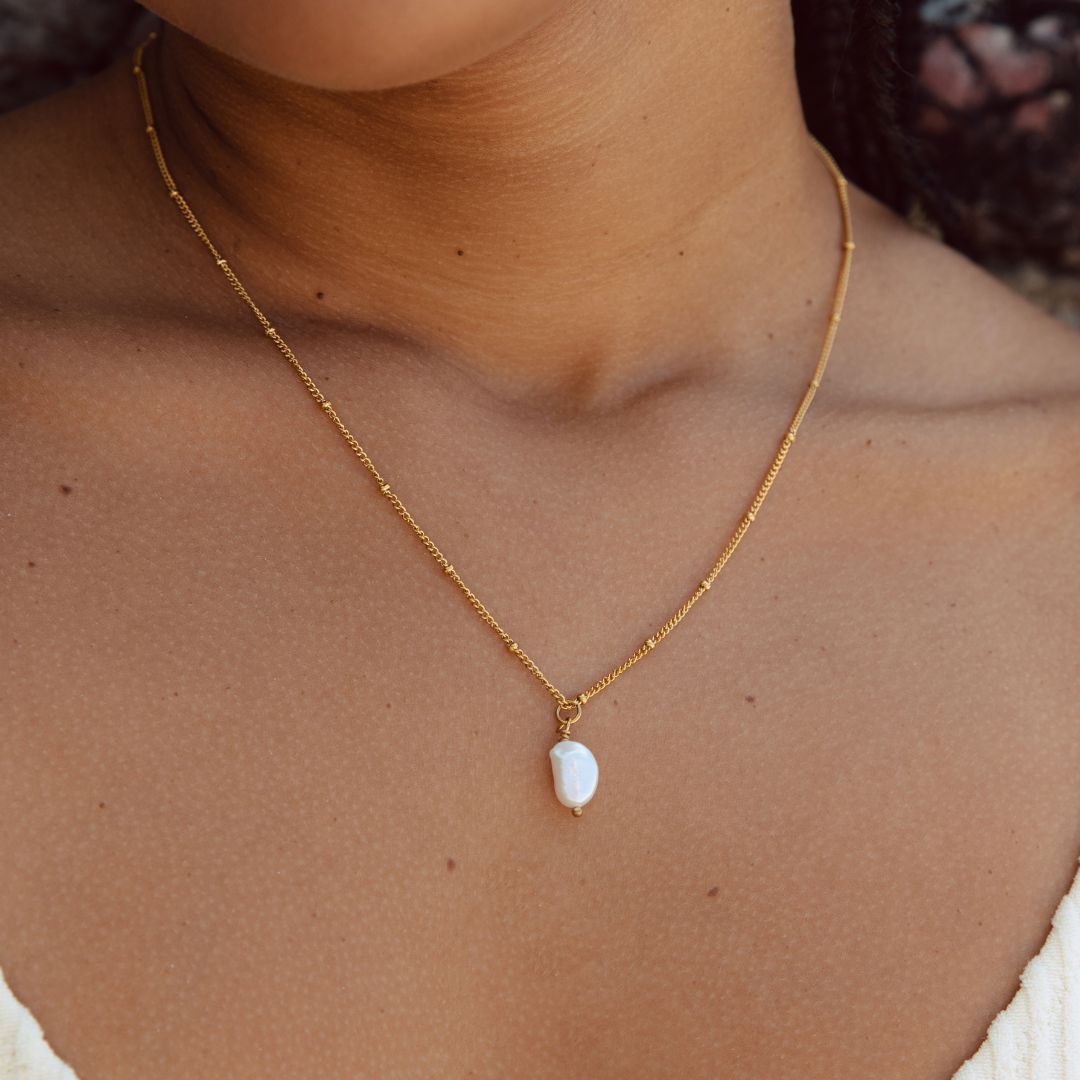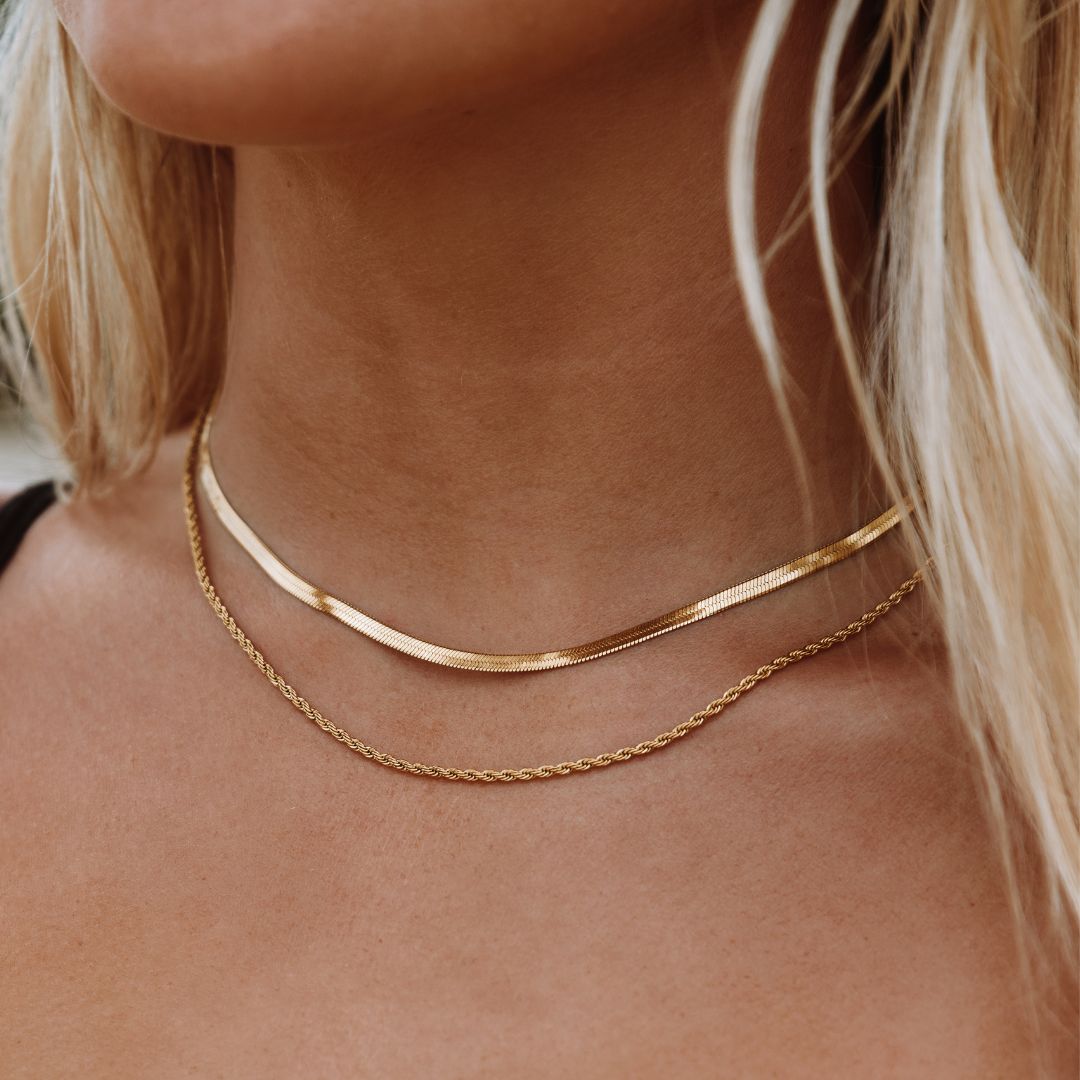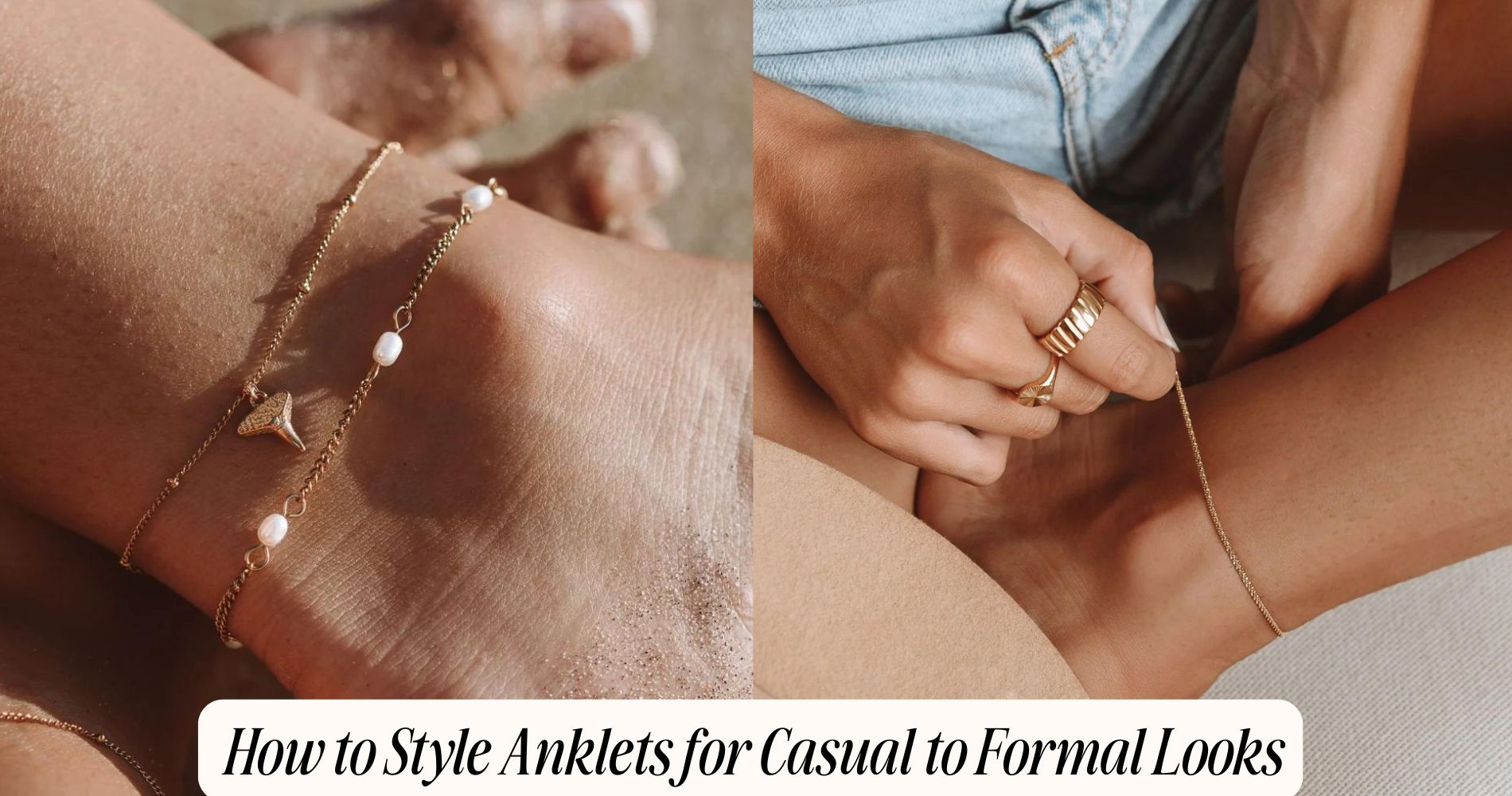
What Is a Jump Ring and Why Is It Essential for Jewelry Making?
What is a jump ring? A jump ring is a small, circular metal connector that's essential for your jewelry-making projects. Whether made from sterling silver or gold-filled, it seamlessly links charms, chains, and other elements. Available in various gauges, jump rings allow you to choose the right balance of strength and delicacy for your designs. These versatile rings open and close with ease, making them incredibly user-friendly. Without them, your jewelry pieces wouldn't stay together, limiting your creative possibilities. Curious about how to select the right jump ring for your projects? Explore our Waterproof Jewelry collection for stylish and durable pieces.
Definition of Jump Rings
Jump rings are vital components in jewelry making, acting as versatile connectors that link various elements together. Understanding their construction is important for your projects. Typically, jump rings are circular metal rings that can be opened and closed, allowing you to attach charms, beads, or clasps seamlessly.
When it comes to jump ring materials, you'll find a variety of options available, including copper, sterling silver, gold-filled, and aluminum. Each material has its own unique properties, affecting durability, weight, and appearance. For instance, sterling silver offers a classic look and excellent durability, while aluminum is lightweight and available in an array of colors.
The construction of a jump ring involves precise manufacturing techniques that guarantee a consistent shape and strength. You'll often encounter different gauges, which refer to the thickness of the wire used. Thicker jump rings provide enhanced strength, making them ideal for heavier components.
In contrast, thinner options work well for delicate designs.
Types of Jump Rings
In the world of jewelry making, understanding the different types of jump rings is vital for achieving the desired functionality and aesthetic in your designs.
You'll find that jump rings come in various types, primarily differentiated by their materials and size variations.
Common materials include sterling silver, gold-filled, stainless steel, and aluminum. Each offers unique properties; for instance, sterling silver provides a classic look, while stainless steel is highly durable and resistant to tarnishing. Gold-filled jump rings give the appearance of solid gold without the hefty price tag, making them popular among artisans.
When it comes to size variations, jump rings range from tiny, delicate options for intricate work to larger, sturdier ones for more substantial pieces. The diameter and thickness of the jump ring play significant roles in determining how well it will hold components together.
Choosing the right type depends on your project's needs; consider both the material and size to guarantee your jump rings blend seamlessly with your overall design.
Uses in Jewelry Making
Versatile components like jump rings play a crucial role in jewelry making, serving various functions that enhance both structure and design.
One of the primary jump ring applications is connecting different elements in your creations, such as attaching charms to chains or linking beads together. This connection guarantees your pieces flow seamlessly while maintaining their integrity.
You can also use jump rings to create intricate designs. By employing various jump ring techniques, like the chainmaille method, you can construct stunning patterns that add depth and texture to your jewelry.
Experimenting with different sizes and gauges of jump rings allows you to customize the look and feel of your work, whether you want a delicate piece or something more robust.
Additionally, jump rings are fundamental for finishing touches, like adding clasps or closures, guaranteeing your jewelry isn't only beautiful but functional. Their ability to pivot slightly when opened and closed makes them perfect for this purpose.
Choosing the Right Jump Ring
When you're selecting the right jump ring for your jewelry project, consider both the design and functionality you need.
Start with size considerations—jump rings come in various diameters and wire thicknesses. A larger diameter provides more space for connecting multiple components, while a thicker wire guarantees durability, especially for heavier pieces. Think about how the jump ring will fit into your overall design; it should complement, not overpower, your jewelry.
Next, pay attention to metal types. Common options include sterling silver, gold-filled, and aluminum.
Each metal offers different benefits: sterling silver is versatile and tarnish-resistant, gold-filled provides a luxurious look without the price tag of solid gold, and aluminum is lightweight and affordable. Choose a metal that aligns with your design vision and the wearability of the piece.
Tips for Using Jump Rings
Using jump rings effectively requires a blend of technique and precision. To start, always choose the right jump ring technique for your project.
When opening a jump ring, grip it with two pliers—one on each side of the cut. Avoid pulling it apart; instead, gently twist the ends away from each other. This maintains the ring's shape and guarantees a secure closure.
When connecting components, remember to thread the jump ring through both pieces before closing it. This guarantees a strong bond, preventing breakage. After you've attached everything, make sure to close the jump ring tightly, as a loose closure can lead to parts falling off.
Storage is just as important. Keep your jump rings organized in a compartmentalized container or a labeled craft box. This prevents tangling and makes it easier to find the size or style you need for your next project.
Additionally, consider separating them by material or gauge for quick access. With these jump ring techniques and effective storage tips, you'll enhance your jewelry-making experience and create stunning pieces that stand the test of time.
Frequently Asked Questions
Can Jump Rings Be Used for Non-Jewelry Projects?
Absolutely, you can use jump rings for various crafting applications! They're great for connecting elements in artwork, securing charms, or even creating unique keychains. Their versatility opens up a world of creative uses beyond jewelry.
How Do I Know the Quality of a Jump Ring?
To assess a jump ring's quality, check its materials for durability and corrosion resistance. Also, consider sizes; thicker rings often provide better strength. A high-quality jump ring enhances your project's overall integrity and appearance.
Are There Any Safety Concerns When Using Jump Rings?
When considering jump ring safety, always check for sharp edges and guarantee they're securely closed. By following jewelry-making precautions, you'll protect yourself and your creations, guaranteeing a safe and enjoyable crafting experience every time.
Can Jump Rings Be Soldered or Welded?
Yes, you can solder or weld jump rings using appropriate soldering techniques and welding methods. Just guarantee you choose compatible metals to avoid compromising their integrity, and always practice safe handling during the process.
What Tools Are Needed to Work With Jump Rings?
To work with jump rings, you'll need various pliers types, like round-nose and chain-nose, for opening and closing. Keep a range of jump ring sizes handy to guarantee versatility in your jewelry projects.
Conclusion
In jewelry making, jump rings aren't just accessories; they're essential connectors that keep your creations intact. By understanding their types and uses, you can elevate your designs and guarantee durability. When choosing the right jump ring, consider size, material, and purpose to enhance your pieces. With a few handy tips, you'll master their application and reveal endless creative possibilities. So, grab those jump rings, and let your imagination flow—your next masterpiece awaits!
























Leave a comment
This site is protected by hCaptcha and the hCaptcha Privacy Policy and Terms of Service apply.